General Assembly
The General Assembly ensures a diverse Board composition regarding geographic regions and industry sectors.

The 5G Automotive Association (5GAA) is a global association with over 120 member companies from the automotive and telecommunications industries. Partners who are active in the broader telecommunications and automotive ecosystem, such as universities, research bodies, associations, and public authorities also joined the ecosystem. Each of the 5GAA members bring added value to the 5GAA mission through their contributions and visionary mindset. Together, the key partners foster collaboration and exchange to path the way towards the new mobility era.
The Fifth Generation Communication Automotive Research and innovation, 5GCAR, is a 5GPPP Phase 2 project. The 5GCAR research and innovation initiative addresses the stringent requirements posed on the wireless communication system by bringing the fields of telecommunication and automotive closer together and investigating the benefit of 5G for demanding automotive use cases.

The Horizon 2020 project 5G-DRIVE: 5G HarmoniseD Research and TrIals for serVice Evolution between EU and China (2018-2021) aims at trialling and validating the interoperability between EU & China 5G networks operating at 3.5 GHz bands for enhanced Mobile Broadband (eMBB) and 3.5 & 5.9 GHz bands for V2X scenarios.

5G EVE is the European 5G validation platform for extensive trials. The goal is to implement and test advanced 5G infrastructures in Europe. The 5G-EVE concept is based on further developing and interconnecting existing European sites in Greece, Spain, France, and Italy to form a unique 5G end-to-end facility.

The 5G-MOBIX project is co-financed by the European Commission within the framework of the Horizon 2020 programme. 5G-MOBIX will develop and test automated vehicle functionalities using 5G core technological innovations along multiple cross-border corridors and urban trial sites, under conditions of vehicular traffic, network coverage, service demand, as well as considering the inherently distinct legal, business and social local aspects.

5G-ROUTES is a 5G-PPP Phase 3 project whose aim is to validate through robust evidence the latest 5G features and 3GPP specifications (R.16 & R.17) of Connected and Automated Mobility (CAM) under realistic conditions. In particular, it will conduct advanced large-scale field trials of most representative CAM applications to demonstrate seamless functionality across a prominent 5G cross-border corridor (Via Baltica-North), traversing Latvia, Estonia and Finland.

The Fifth Generation Cross-Border Control, 5G-CroCo, is a 5G-PPP Phase 3 Innovation Action. 5GCroCo aims to trail 5G technologies in the cross-border corridor along France, Germany and Luxembourg. In addition, 5GCroCo also intends to define new business models that can be built on top of this unprecedented connectivity and service provisioning capacity. Ultimately, 5GCroCo will impact relevant standardization bodies from the telco and automotive industries.

5G for Connected and Automated Road Mobility in the European Union, 5G-CARMEN, will build a 5G-enabled corridor from Bologna to Munich to conduct cross-border trials of 5G technologies in four major use cases: cooperative manoeuvring, situation awareness, video streaming, and green driving. Multi-tenancy and neutral host concepts will be leveraged to deliver a final platform capable of enabling new business models. 5G-CARMEN will complement C-V2X with LTE and C-ITS technologies, targeting interoperability and harnessing a hybrid network.

The CONCORDA project, launched in October 2017 and funded by the Connecting Europe Facility, will contribute to the preparation of European motorways for connected and automated driving and high-density truck platooning, by providing adequate connected services and technologies in terms of interferences and interoperability.
Global5G is a Coordination and Support Action within Europe’s 5G public and private partnership (5G PPP) that is working on both fronts through its focus on vertical industries and small cell deployments. It works closely with the private side of the 5G PPP – the 5G Infrastructure Association (5G-IA) to help boost impacts through diverse working groups and task force activities.

5GMED is an innovative H2020-funded project that focuses on a sustainable 5G deployment model for future mobility in the cross-border corridor between Spain and France. Aside from the implementation of four different use cases, 5GMED’s trials seek to enhance roaming transitions across MNOs and neutral hosts for both Cooperative and Connected Automated Mobility (CCAM) and Future Railway Mobile Communications Systems (FRMCS).

NordicWay 2 is a C-ITS pilot project that enables vehicles, infrastructure and network operators to communicate safety hazards and other information from roads in the Nordic countries between different stakeholders. The project is a collaboration between public and private partners in Finland, Norway, Sweden and Denmark and builds on the achievements of the previous NordicWay project.
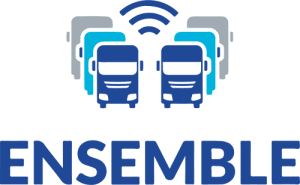
ENSEMBLE wants to communicate the economic, societal and environmental impact of decisions surrounding platoon forming and dissolving. ENSEMBLE also strives to modernize the transport system by finding an optimal balance between fuel consumption, emission level, travel times and impact on highway traffic flow, resulting in reduced impacts on climate change, air pollution, noise, health and accidents.

ARCADE is a Coordination and Support Action that coordinates consensus-building across stakeholders for sound and harmonised deployment of Connected, Cooperative and Automated Driving (CAD). It supports the development of a common approach to the development, testing, validation and deployment of CAD in Europe and beyond, and aims to establish a joint stakeholders forum in order to coordinate and harmonise automated road transport approaches at a European and international level.
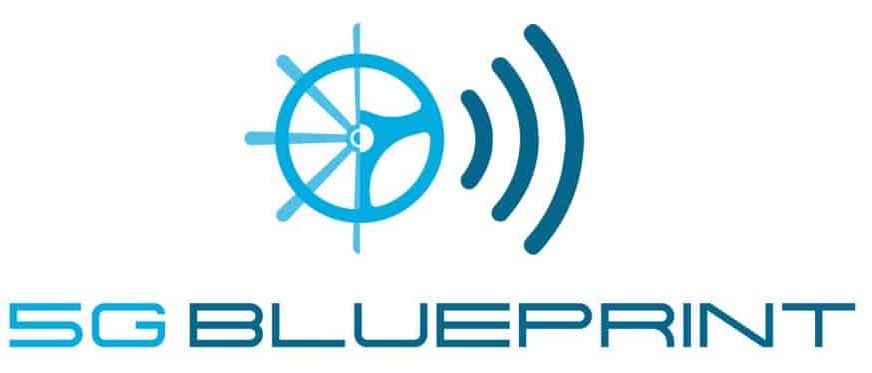
5G Blueprint is a H2020-funded project that aims to design and validate technical architecture, business models and governance for interrupted cross-border teleoperated transport based on 5G connectivity. Its objective is to provide a blueprint for operational pan-European deployment of teleoperated transport solutions in the logistics sector, and beyond. It explores the economics of 5G in cross-border transport and the issues of responsibility and accountability within the value chain.

Stardust is an H2020 Smart Cities project, which brings together exemplary models of smart, highly efficient, intelligent, and citizen-oriented cities. The project focuses on intelligent solutions for energy, mobility and ICT, to be integrated into cities together with innovative business models. One of its objectives is to create and deploy open city information platforms, that allows cities to engage actively with each other and to share information. The project’s results will serve as a blueprint for replication across Europe and abroad.
Funded by the German Ministry of Transportation and Digital Infrastructure (BMVI) in the program “Automated and Connected Driving on Digital Test Fields in Germany”, the objective of the project ConVeX is to set up a testbed for the first field tests of 3GPP LTE Release 14 Cellular V2X (C-V2X) and validate its performance and feasibility.

The 5G Automotive Association (5GAA) is comprised of the Executive Committee, the Board, the General Assembly, and the Working Groups. Together, the different bodies ensure the successful running and operations of the association.
The General Assembly ensures a diverse Board composition regarding geographic regions and industry sectors.
The 5GAA Board supervises and advises the Executive Committee in all material respects, particularly concerning strategic considerations. The Board is composed of eighteen members, elected by the General Assembly every year, out of which:
– twelve seats are reserved to platinum members (the highest member category);
– six seats are reserved to candidates elected among the gold members.
The 5GAA Board is led by a Chair and a Vice Chair, elected amongst its members.
Reporting to the Board, the Executive Committee is the legal representative body of the association and is responsible for the day-to-day management of the 5GAA. The Executive Committee consists of three persons —Director General, Secretary, and Treasurer—, supported by the Chief Technology Officer as a non-statutory member.

The 5G Automotive Association (5GAA) is a global, cross-industry organisation of companies from the automotive, technology, and telecommunications industries (ICT), working together to develop end-to-end solutions for future mobility and transportation services. Created in September 2016, 5GAA has rapidly expanded to include key players with a global footprint in the automotive, technology and telecommunications industries. This includes automotive manufacturers, tier-1 suppliers, chipset/communication system providers, mobile operators and infrastructure vendors.

5GAA was created to connect the telecom industry and vehicle manufacturers to develop end-to-end solutions for future mobility and transportation services.
5GAA bridges the automotive and telecommunication industries in order to address society’s connected mobility needs, bringing inclusive access to smarter, safer and environmentally sustainable services and solutions, integrated into intelligent road transportation and traffic management.
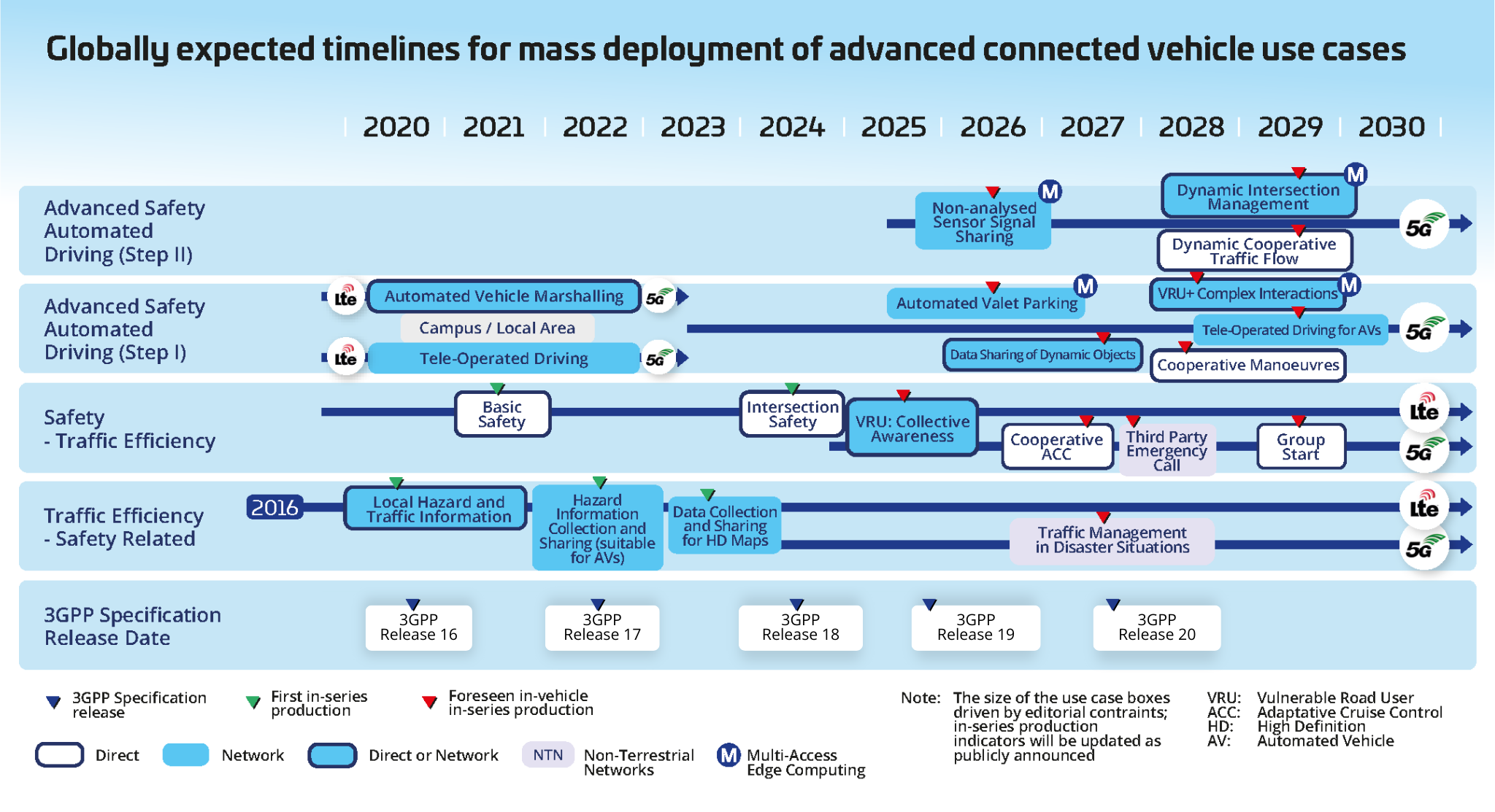
5GAA is addressing today’s mobility key challenges. With C-V2X technology, 5GAA will revolutionise the mobility ecosystem and the way drivers interact with the world. 5GAA’s ambition is to improve the overall transportation industry to make it safer, greener and more efficient for vehicles, road users and the surrounding infrastructure.

5GAA has defined 4 strategic pillars designing the short and long term goals in very diverse domains contributing to the same ambition: Connected Mobility.

The 52nd edition of the Consumer Electronics Show (CES), one of the most influential technology events in the world, is taking place in Las Vegas from the 5th to the 8th of January 2022. The event gathers more than 1900 leading companies and hundreds of thought leaders from around the world to showcase the latest technology developments in many different sectors.
The 5G Automotive Association (5GAA) is glad to announce that its members Continental, Hexagon, Qualcomm, Rohde & Schwarz, Samsung, and TÜV Rhineland will participate in the event to showcase the latest C-V2X technology deployments. At their booth, the audience will experience how C-V2X will shape the next generation of mobility by making transport safer and more efficient.
Check out our map below to overview 5GAA’s members’ activities at CES Las Vegas 2022.
You can download the brochure here.

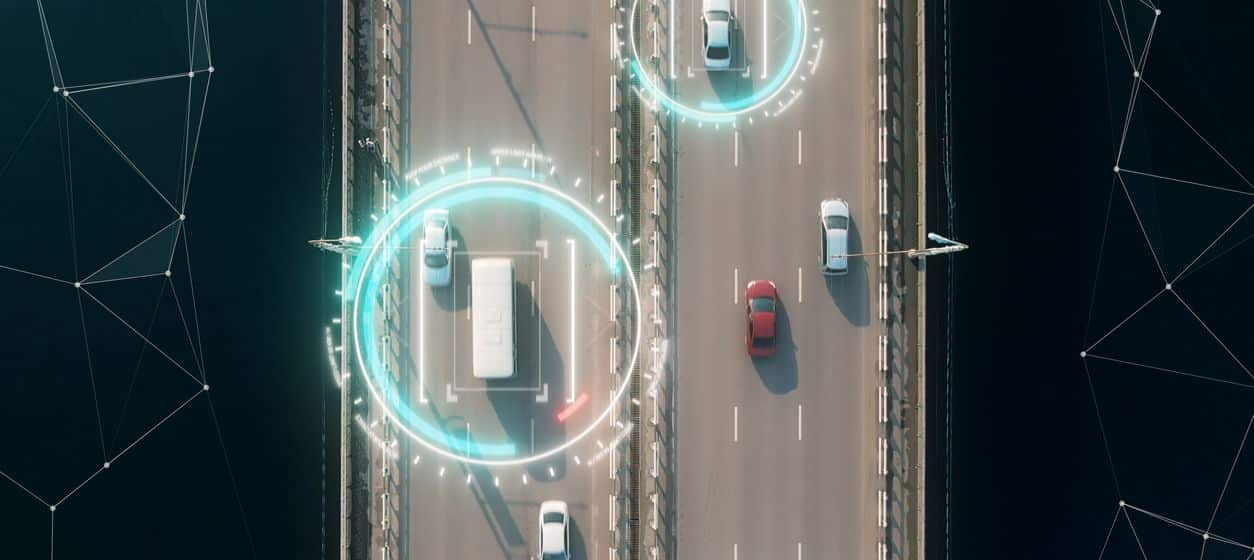
The evolution of driving automation technology is gradually reducing our dependence on human drivers. Tele-operated Driving (ToD) technology separates drivers or driving automation systems from the physical vehicle, effectively operating it from a remote location. ToD thus enables shared remote assistance or remote driving services from a central location, which has the benefit of reducing labour costs (fewer drivers), while improving safety and comfort for the drivers.
This 5GAA white paper describes the technical and business framework, and a visionary roadmap for ToD services. Different ToD types, which are classified according the impact on the operation level of an automated vehicle, are studied under the different environments such as automated vehicle parking areas, or public roads or even using different mobile networks. This white paper is an abstract of the following published 5GAA ToD technical reports, where interested readers can find further technical details and business considerations on ToD services.
Read the full White Paper here.

On 14 December 2021, the European Commission published its proposal to amend the Directive 2010/40/EU on the framework for the deployment of Intelligent Transport Systems (ITS).
5GAA views the proposal as a first step in the right direction to establish a forward-looking regulatory framework for ITS in the context of cooperative, connected and automated mobility.
We commend the consideration given to new technologies for ITS services in the proposal. We also strongly welcome the door opened towards a transition to such newer technologies, among which 5G-V2X, in the future.
5GAA also salutes the proposal’s acknowledgement that Cooperative Intelligent Transport Systems (C-ITS) future “requirements neither impose nor discriminate in favour of the use of a particular type of technology”, following the Council’s decision to object to the C-ITS delegated act in 2019.
We regret, however, that the proposal falls short of enshrining technology neutrality among the key principles for specifications and deployment of ITS listed in Annex II.
We also consider that any future mandate for the deployment of ITS services should be subject to a co-decision procedure rather than comitology. In that regard, 5GAA notes the Regulatory Scrutiny Board’s opinion pointing at “significant shortcomings” in the impact assessment report. We believe this is particularly true when it comes to the assessment made on the possible mandatory deployment of Day 1 C-ITS from 2028 onwards.
5GAA stands ready to engage with the European Parliament, and the Council of the European Union as the ordinary legislative procedure starts to suggest improvements to the initial Commission’s proposal.

December 14, 2022 – A group of leading transportation stakeholders filed a request at the United States Federal Communications Commission (FCC) seeking immediate authority to move forward with Cellular Vehicle-to-Everything deployments. Signatories to the filing include automakers Ford, Audi, and Jaguar Land Rover, the Utah and Virginia state departments of transportation, and a number of equipment manufacturers, including 5GAA members Applied Information, Cohda Wireless, Commsignia, Danlaw, HARMAN and Panasonic.
The filing follows last year’s unanimous decision by the FCC concluding that the United States should move forward with C-V2X exclusively. In that decision, the FCC invited automakers, road operators, and equipment manufacturers to seek rule waivers if interested in deploying C-V2X in the near term. The FCC reasoned that these waivers would enable a smoother and more rapid deployment of C-V2X while the agency considered final rules for the technology.
“Today’s joint waiver request from leading automakers, state departments of transportation, and equipment manufacturers signifies the collaborative efforts underway to ensure the successful implementation of C-V2X,” stated 5GAA CTO Maxime Flament. “It also demonstrates the strong demand across the transportation industry to immediately deliver C-V2X safety services to American travelers, especially as deployments accelerate in other regions of the world. On the heels of its recent unanimous decision to move forward with C-V2X, the FCC should quickly grant this waiver request and afford stakeholders the ability to move forward with this state-of-the-art roadway safety technology.”
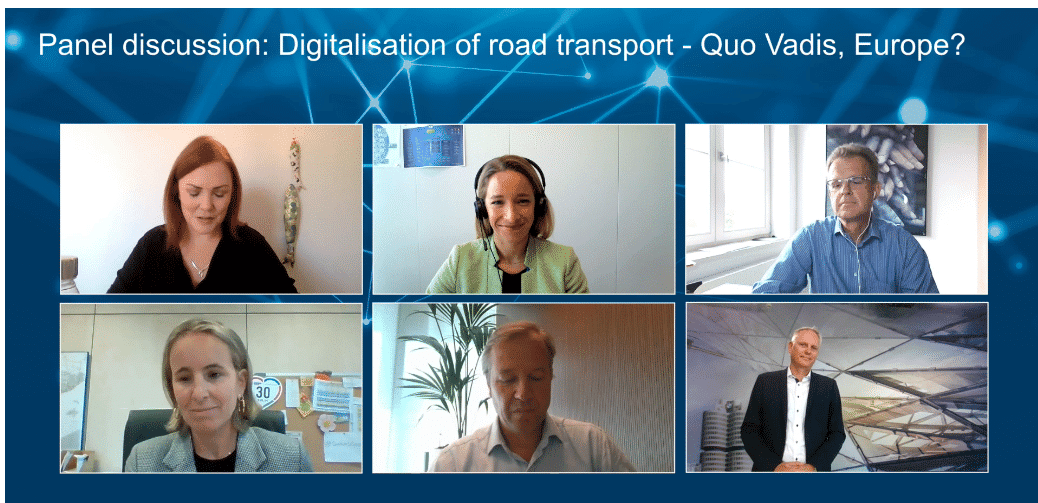
On Tuesday 28 September 2021 the 5G Automotive Association (5GAA) hosted an online conference on “5G: Connected Mobility in the digital age” to discuss the ongoing challenges and opportunities fostered by the digitalization of road transport in Europe.
The event brought together EU representatives, local and national authorities, and the connected automotive ecosystem to the heart of Europe to advance the dialogue on the latest state-of-play and capabilities of Cellular-Vehicle-to-Everything (C-V2X), the EU regulatory framework and the importance of the 5G roll-out, and the crucial role of C-V2X technology to increase traffic safety and efficiency and achieve lower emissions globally.
The Association had the pleasure to have European Commissioner for Transport Adina-Ioana Vălean open the conference and address the attendees. “Our Sustainable and Smart Mobility Strategy sets out milestones for the transformation of our transport system – and Cooperative, Connected, and Automated Mobility will play a key role: by 2030, we expect automation to be deployed at a large scale” stated Commissioner Vălean.
The event welcomed high-level representatives such as Daniel Mes, Cabinet of Executive Vice-President for the European Green Deal Frans Timmermans, Charlotte Nørlund-Matthiessen, Cabinet of Commissioner for Transport Adina-Ioana Vălean, Member of European Parliament Henna Virkkunen, Peter Stuckmann, DG CONNECT Head of Unit Future Connectivity Systems, the European Cyclists’ Federation (Jill Warren, Chief Executive Office), Spain’s Directorate-General for Traffic (Ana Isabel Blanco Bergareche, Associated Deputy Director), the City of Turin (Nicola Farronato, Head of Innovation) and the Swedish Transport Administration (Hamid Zarghampour, Chief Strategist Connected and Automated Transports). It also witnessed a strong ecosystem presence, with speakers from 5GAA members BMW, Stellantis, Volvo Cars, Ford, HERE Technologies, Telefonica, TIM and Huawei.
Rewatch the event in the videos below.

The international collaboration of tech leaders and public sector on a live connected car trial will pilot new roaming technology for traffic safety on 2 December 2021.
2 DECEMBER 2021, Turin (ITALY) – On 2 December, the City of Turin (Italy) will host a live trial of new driver and pedestrian safety technology allowing near-real-time notification of roadway hazards through 5G-Edge networks. This trial is one of a series conducted internationally by a historic public-private collaboration over the next few years, organized by the 5G Automotive Association (5GAA) and eight member companies representing leading technology companies from around the globe.
“This collaboration between the 5G Automotive Association and its member companies is the perfect example of how we can secure safety on roads and build the future of connected mobility,” said Maxime Flament, CTO of 5GAA. “This time, demonstrated use-cases take place in Europe through 5G and Edge networks—I look forward to seeing more in the future in the United States and other continents.”
The promise of 5G and Edge technology has long been anticipated to deliver new connected services that will revolutionize daily life, with the estimated new economic opportunity stretching into the trillions USD over the next 10-years1. The global connected car market size alone is projected to reach USD 191.83 billion by 2028.
5G transmission speeds and so-called “Edge” servers—locally installed, high-powered computers capable of running Artificial Intelligence programs—open the door to smart city technologies like near real-time traffic management and innumerable other business applications. The connected car concept uses this high-speed and Edge computing technology to communicate with car sensors and pedestrian smartphones, via a user-authorized mobile app—about traffic hazards, like accidents and road construction—to Pedestrian and in-vehicle driver safety and efficient navigation.
“The connected car concept is an important validation of the combined value of Edge, of 5G and IOT,” said Paolo Campoli, Head of Global Service Provider sector at Cisco, “We are so excited to take part in this event that creates a platform for innovation in 5G IOT. The integration of 5G mobility, applications and data processing at the Edge requires expertise from very different domains—expertise that Cisco and Partners can bring. It includes elements of automation, intelligent infrastructure and workloads control, cybersecurity protection and end-to-end application observability. The live trial in Turin is a great opportunity to show how the intersection of Edge, 5G and IOT based on Standards creates a platform to connect Service Providers and Industries.”
This live international trial attempts to solve one of the more technical challenges of making the connected car concept a daily reality. The 5G networks underpinning the concept are managed by communication service providers (CoSPs) according to geography, each with different edge solutions that must be able to communicate without interruption of the V2X applications as drivers cross borders. Roaming services—the ability to make a call regardless of the network—is one early success of multi-mobile network operators (MNO). Demonstrating the connected car concept can work in a roaming scenario is the core objective of the live trial and represents the first of any such attempt in Europe.
“Telecom operators will have to play a major role by enabling applications and services for the connected car ecosystem,” says Shamik Mishra, CTO Connectivity, Capgemini Engineering. He further adds: “Capgemini is excited to bring its innovative federated MEC (Multi-Access Edge Computing) platform and applications to this 5GAA trial to demonstrate the true value of intelligent industry, leveraging data in the vehicles and edge-cloud. The trials serve as a stepping-stone for realizing the potential for automakers to provide services to their connected cars from the network”. The trial will demonstrate how the car manufacturers, MNOs and technology providers come together to help overcome the challenge of when a vehicle moves from one network boundary to another or Inter-MNO handover of MEC service.
The Turin live trial addresses three objectives:
One of the key benefits of the trial is the value demonstrated by bringing in a large ecosystem to help develop not only the technology but also build the business case and model that will help drive the market adoption for 5G and C-V2X to help into the digital transformation of smart cities of the future. To succeed in this endeavor, it will need a village and investment from both public and private sectors to help adopt this new technology to provide a quality of life for all citizens.
The city of Turin is delighted to facilitate the 5GAA Multi Operator MEC Trial with its Smart Road infrastructure and the technical support of 5T. We see – Chiara Foglietta, Deputy Mayor for Mobility, Ecological and Digital transition, Innovation says – C-V2X services as fundamental to develop a sustainable and safe mobility for all the citizens, whatever transport means they use. In the future, Turin wants to continue the collaboration with 5GAA and offer its Smart Road infrastructure for further scale in the live traffic within Torino City Lab and the new project “ Turin House of emerging Technologies – CTE NEXT”
“As TIM, we are honored to be hosting in Turin such a challenging trial by leveraging our Innovation Lab competencies and our pre-commercial instances of Edge Cloud,” says Daniele Franceschini TIM VP Innovation, Standard and Portfolio. “The federation model implemented with our partners enables a ‘continuum’ between Edge Cloud instances allowing players from the automotive industry and beyond to benefit from a seamless cloud experience across country boundaries.”
“Greater connectivity speeds, improved hardware and expanded software expertise have opened new opportunities for Stellantis with safety systems being one of the many areas we focus on,” said Mamatha Chamarthi, Head of Software Business and Product Management. “Through smart and strategic partnerships such as 5GAA, we will capitalize on next-generation systems and prove out the technology.”
The demonstration brings new learnings for various players across the value chain and creates a testbed for trying out new 5G connected car services at the Edge in subsequent phases. The Turin Live Trial will run throughout the day on 2 December 2021.
BACKGROUND
In this live trial, Telecom Italia (TIM), Telefonica, BT/EE will demonstrate the NSA 5G networking capabilities and the Edge Cloud solution to deliver connected car use cases at the Edge of their networks for their customers. TIM makes its Innovation Lab facilities available and its commercial 5G network with pre-commercial Edge Cloud specific features such as Local Break Out, that together with the federation of edge platforms in TIM, BT/EE and Telefonica make the use cases available for roaming users from BT/EE and Telefonica.
The three companies are hosting Capgemini’s ENSCONCE MEC platform, built upon the Intel Smart Edge Open toolkit, the Intel® Distribution of OpenVINO toolkit, and Intel hardware to enable connected car use cases at the Edge on 2nd Gen Intel Xeon Scalable processor equipped Cisco Servers. Intel Smart Edge Open (formerly known as OpenNESS) is a royalty-free edge computing software toolkit for building optimized and performant edge platforms.
“The international live trial of building and provisioning Connected Car edge services in a multi-operator scenario is a transformative 5G and Edge use case,” said Renu Navale, Vice President and General Manager of Smart Edge Platforms Division at Intel. “This trial demonstrates the possibilities that 5G connectivity and edge computing can bring to connected car solutions, when the broad ecosystem collaborates and uses Intel technologies such as Xeon processors, Smart Edge Open and OpenVINO.”
Capgemini’s ENSCONCE MEC Platform provides multi-tenancy and multi-MNO MEC federation capabilities. The visual compute applications for pedestrian detection and tracking supported by Capgemini’s Orbital Car Situational Awareness V2X platform. To realize the Active and Passive Vulnerable Road User (VRU) use cases, Cisco provides the Edge infrastructure based on CISCO UCS Servers (the Unified Computing Systems that combines computing, network and management in a cohesive architecture) hosting the ESCONCE platform, used to demonstrate Virtual-RSU and host V2X applications that are based on the Intel Xeon Scalable Processors and Intel HDDL-R Visual Accelerators. Harman International and Capgemini provide the Virtual-RSU and RSE solutions respectively to realize various V2X use cases with location-aware and AI inferencing technologies. Harman also offers V2X Application Server and a 5G enabled TCU that integrates seamlessly with Stellantis/FCA car and hosts V2X applications.
“It is key that operators and industry partners collaborate to explore the technical feasibility and benefits to unlock the new business opportunities and services to our customers. In this project, we are jointly evaluating the potential to federate edge cloud compute capabilities across multiple geographies to support low latency use cases, including key connected car use cases being delivered as 5G edge services in a multi-MNO, multi-OEM environment,” said Sunil Joshi, Senior Manager, Global Roaming Products at BT/EE.
“Telecom operators will have a key role in supporting V2X services and this trial demonstrates the value of leveraging mobile architecture, federating edge platforms and allowing local break out in visited network. Such an approach as defined in the GSMA Operator Platform Group allows customers and developers to deploy their applications across multiple operator domains, and our end users to have the best latency and customer experience when accessing their services,” said Juan Carlos Garcia, Senior Vice-President of technology innovation and ecosystems, Telefonica.
“At Harman, we are focused on building connectivity solutions at the intersection of 5G, V2X and Edge Computing that will build more equity on the road for all users,” said Mahsa Nakhjiri, Director, Product Management. “While these technologies can unlock many new use cases and experiences, the most important element of any solution in this space is safety. As programs such as this one fueled by the collaboration of industry leaders and organizations like 5GAA bring a new degree of safety to users, they will also lead to a higher level of confidence in autonomous vehicles.”
Download the event visual here
Watch the video of the event here

This report is an update to the 2020 report that presents a study by the 5GAA on the spectrum needs of so-called day-1 and advanced use cases for intelligent transport systems (ITS) as implemented by LTE-V2X and NR-V2X cellular V2X (C-V2X) technologies, respectively.
The study estimates the amounts of bandwidth required for the introduction of use cases for direct communications (via the cellular V2X PC5 interface in the 5.9 GHz band harmonised globally for ITS) and for network-based communications (via the cellular-V2X Uu interface in spectrum designated for use by mobile communication networks).
This update to the report presents spectrum needs estimates for a number of advanced use cases including “Cooperative Perception”, “Vulnerable Road User”, “Group Start” and “Cooperative Lane Merging”, among others.